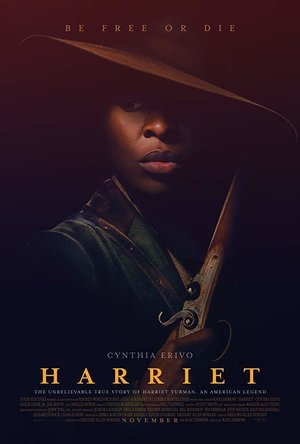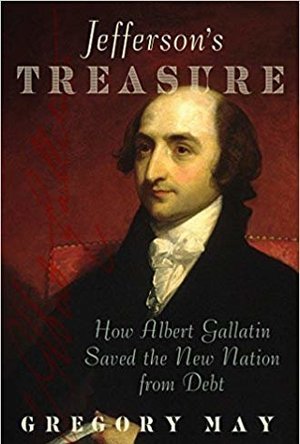Search
Search results
Debbie (52 KP) rated My Heart Belongs In Gettysburg, Pennsylvania in Books
Nov 2, 2018
My Heart Belongs In Gettysburg, Pennsylvania
By: Murray Pura
Publisher: Barbour Publishing, Inc
Published Date: November 1, 2018
256 pages Christian, Romance
#MyHeartBelongsInGettysburgPennsylvania
#NetGalley
<img src="https://www.netgalley.com/badge/9a41056d7201c045d3f9e5c161f9569494687ae1"; width="80" height="80" alt="Professional Reader" title="Professional Reader"/>
I greatly enjoyed this book. I gave this book 4 stars. I love history and this book was about the civil war one of my favorite subjects.
Clarissa is a 19 year old girl who has a lot of spunk and energy. She is a conductor on the underground railroad. She has a love interest in Kyle and Liberty. She doesn't know which one to choose. She likes both in different ways. Liberty is also on the underground railroad but she doesn't know what he looks like because he always wears a hood over his head. Kyle is studying to be a clergyman. When the war breaks out she is upset that Kyle won't join the army instead he stays behinds and helps the head clergyman.
During one of the underground escapes with Liberty they are caught and Liberty gets hurt. Who is Liberty? Why does he hide his face? What happens to Kyle? You need to read the book to find out.
Clarissa has some more adventures during the war. At the beginning of the book I didn't like her but throughout the story she grows and learns, which makes her a better person.
I was able to figure out a few things that happen in the book fairly quickly so it brought down my rating just a little. The author did a great job on the history. I would recommended this book for those who love history and a romance story.
By: Murray Pura
Publisher: Barbour Publishing, Inc
Published Date: November 1, 2018
256 pages Christian, Romance
#MyHeartBelongsInGettysburgPennsylvania
#NetGalley
<img src="https://www.netgalley.com/badge/9a41056d7201c045d3f9e5c161f9569494687ae1"; width="80" height="80" alt="Professional Reader" title="Professional Reader"/>
I greatly enjoyed this book. I gave this book 4 stars. I love history and this book was about the civil war one of my favorite subjects.
Clarissa is a 19 year old girl who has a lot of spunk and energy. She is a conductor on the underground railroad. She has a love interest in Kyle and Liberty. She doesn't know which one to choose. She likes both in different ways. Liberty is also on the underground railroad but she doesn't know what he looks like because he always wears a hood over his head. Kyle is studying to be a clergyman. When the war breaks out she is upset that Kyle won't join the army instead he stays behinds and helps the head clergyman.
During one of the underground escapes with Liberty they are caught and Liberty gets hurt. Who is Liberty? Why does he hide his face? What happens to Kyle? You need to read the book to find out.
Clarissa has some more adventures during the war. At the beginning of the book I didn't like her but throughout the story she grows and learns, which makes her a better person.
I was able to figure out a few things that happen in the book fairly quickly so it brought down my rating just a little. The author did a great job on the history. I would recommended this book for those who love history and a romance story.
Gareth von Kallenbach (980 KP) rated Harriet (2019) in Movies
Nov 7, 2019
Harriet Tubman was among one of the most significant abolitionists in United States history. This film tells the story of her life where she was born in Maryland as a plantation slave. Named Araminta at “Minty” Ross, she transforms throughout her journey, becoming Harriet Tubman as well as transforming into Moses, the appropriate name for the person who leads.
The story begins after church services where Minty’s husband John Tubman who was a free slave asks the plantation owner to allow Minty to be freed so their children would be born free instead of slaves. The slave owner, Henry Broadess (Mike Marunde played with a gleeful abundance of entitlement) denies the request. This is the spark where Araminta decides to run away to live as a free person.
Minty was known for her “spells” since the accident, where she was hit in the forehead by a thrown weight. The film interprets seizures as her conversation with God. The film uses these spells as her talks with and messages received from God. That is how Harriett’s visions are explained. That she has an ability to know where to go and what to from what she sees when she has an episode.
Harriet had saved herself from slavery. She made it to the State of Pennsylvania where she would be free. After a year or so, Harriet decided that she would not be able to rest comfortably as a “free slave” without her husband and her family. That is when she decided that she would go get her loved ones.
As we know from history, she saved her family and many others through the Underground Railroad. All her rescues were successful, totaling 70 that she brought to freedom. The Civil War began a few years later. We are shown Harriet, working with the Union Army to save the lives of about 700 slaves.
The film celebrates Harriet Tubman and provides a beautiful biographical film of this amazing woman. Cynthia Erivo should get a nomination or two come award season. Pssst, she already has a Tony from her performance of The Color Purple on Broadway and a Grammy. She is already halfway to an EGOT. The cast of the film is fantastic. Leslie Odom Jr. as William Still, the man who kept the records of each emancipated slave and provided new identities to help them. Then there is Janelle Monae, as Mary Buchanon, born a free woman. She was among the group that helped Harriet make a new life in Philadelphia.
The film tells a brave tale, but it glosses over the dark history of slavery. Yes, it is one of the dark chapters in humanity. The atrocities committed in the name of self-preservation are despicable. The creators of the movie could have provided a more realistic representation of a picture of slavery.
This film is very good. Ms. Erivo performs effortlessly as Harriet. The supporting cast are very good. Harriet Tubman was a hell of a woman back in the day. I liked the movie. I also would have liked to have slavery shown in stark reality, not coated in idealism.
The story begins after church services where Minty’s husband John Tubman who was a free slave asks the plantation owner to allow Minty to be freed so their children would be born free instead of slaves. The slave owner, Henry Broadess (Mike Marunde played with a gleeful abundance of entitlement) denies the request. This is the spark where Araminta decides to run away to live as a free person.
Minty was known for her “spells” since the accident, where she was hit in the forehead by a thrown weight. The film interprets seizures as her conversation with God. The film uses these spells as her talks with and messages received from God. That is how Harriett’s visions are explained. That she has an ability to know where to go and what to from what she sees when she has an episode.
Harriet had saved herself from slavery. She made it to the State of Pennsylvania where she would be free. After a year or so, Harriet decided that she would not be able to rest comfortably as a “free slave” without her husband and her family. That is when she decided that she would go get her loved ones.
As we know from history, she saved her family and many others through the Underground Railroad. All her rescues were successful, totaling 70 that she brought to freedom. The Civil War began a few years later. We are shown Harriet, working with the Union Army to save the lives of about 700 slaves.
The film celebrates Harriet Tubman and provides a beautiful biographical film of this amazing woman. Cynthia Erivo should get a nomination or two come award season. Pssst, she already has a Tony from her performance of The Color Purple on Broadway and a Grammy. She is already halfway to an EGOT. The cast of the film is fantastic. Leslie Odom Jr. as William Still, the man who kept the records of each emancipated slave and provided new identities to help them. Then there is Janelle Monae, as Mary Buchanon, born a free woman. She was among the group that helped Harriet make a new life in Philadelphia.
The film tells a brave tale, but it glosses over the dark history of slavery. Yes, it is one of the dark chapters in humanity. The atrocities committed in the name of self-preservation are despicable. The creators of the movie could have provided a more realistic representation of a picture of slavery.
This film is very good. Ms. Erivo performs effortlessly as Harriet. The supporting cast are very good. Harriet Tubman was a hell of a woman back in the day. I liked the movie. I also would have liked to have slavery shown in stark reality, not coated in idealism.
Sassy Brit (97 KP) rated Jefferson's Treasure: How Albert Gallatin Saved the New Nation from Debt in Books
Jun 5, 2019
Jefferson’s Treasure, by Gregory May, details, “how Albert Gallatin saved the new nation from debt.” Appointed by President Thomas Jefferson to be his Treasury Secretary, Gallatin continued under President Madison, maintaining that position for twelve years. During his tenure, he abolished internal revenue taxes in peacetime, slashed federal spending, and repaid half of the national debt.
So who was this man that undid Alexander Hamilton’s fiscal system, rejecting it along with Madison and Jefferson? Because both Presidents did not understand the financial system, they depended on Gallatin to reform it. Gallatin arrived in America in 1790 from Geneva and rose up to become a trusted advisor of the Republicans. Six years before Jefferson was elected President, Gallatin’s Pennsylvania neighbors rebelled against the tax on whiskey. He supported them in principle but opposed the violence that ensued, burning the local tax collector’s house, robbing the mail, and marching on Pittsburgh.
The play “Hamilton” uses revisionist history. The real Hamilton believed in big government and wanted to continue funding federal deficits. He based his theories on the British who used the money to fund their large military conflicts, believing that the ability to borrow endless amounts of money would allow the new United States to become a great nation. Jefferson and Madison thought Hamilton’s system, straight from the British way, was tainted with tyranny. As May noted, “It made the people pay obnoxious taxes in order to fund interest payments on a mounting federal debt and the costs of an expensive military establishment. It shifted money from ordinary taxpayers to the relatively few rich men who held the government’s bonds. That was just the sort of thing that had led Americans to revolt against Britain in the first place.”
May believes, “The hip-hop immigrant hero of the Broadway musical is a myth. The musical might be a great work of art, but is relies on misconceptions of Hamilton. He was not an immigrant, but a migrant within the British Empire. Also, he was not a man of the people, as Gallatin was, but an elitist.”
While Hamilton committed to paying only the interest on the government’s debt, Gallatin committed the government to repaying fixed amounts of the principal each year. He also insisted that the government should never spend more than it earned except in times of war. By slashing federal expenses, Gallatin was able to get rid of the tax on whiskey and abolish the entire internal revenue service.
The Republicans, an agrarian society, distrusted these elitists where two-thirds of the government debt belonged to a few hundred very wealthy men residing mainly in Philadelphia, New York, and other mercantile cities. They saw Hamilton’s plan of collecting taxes from ordinary citizens as a way for a few rich men to become even wealthier. Implementing these excise taxes required government officials to inspect, quantify, and mark the items subject to tax.
The Hamilton system benefited the wealthy debt holders and spectators at the expense of the average taxpayer who had to pay the interest. The government would borrow more than the people could pay. Hamilton tried to hide how much money the government was actually spending and spiraled the debt higher and higher.
This was an important part of the British tax base, and “I wanted to show how unpopular it was. Hamilton and company were resented because they created a tax collection network that affected the lives of ordinary citizens. The excise tax is a form of internal taxation, while tariffs are a form of external taxation that fell on the well to do. Remember mostly the well to do bought imports. The Republicans once they came to power relied on import duties rather than excise taxes.”
May further explained, “When Jefferson and his administration came to power it was Gallatin who got rid of Hamilton’s deficit finance system and cut taxes. By the time he has left office he has repaid half the federal debt and set up a program for repaying the rest.”
Anyone who wants to understand the early economic systems of the Founding Fathers will enjoy this book. It shows how Gallatin, by killing Hamilton’s financial system, abolished internal revenue taxes in peacetime, slashed federal spending, and repaid half of the national debt.
So who was this man that undid Alexander Hamilton’s fiscal system, rejecting it along with Madison and Jefferson? Because both Presidents did not understand the financial system, they depended on Gallatin to reform it. Gallatin arrived in America in 1790 from Geneva and rose up to become a trusted advisor of the Republicans. Six years before Jefferson was elected President, Gallatin’s Pennsylvania neighbors rebelled against the tax on whiskey. He supported them in principle but opposed the violence that ensued, burning the local tax collector’s house, robbing the mail, and marching on Pittsburgh.
The play “Hamilton” uses revisionist history. The real Hamilton believed in big government and wanted to continue funding federal deficits. He based his theories on the British who used the money to fund their large military conflicts, believing that the ability to borrow endless amounts of money would allow the new United States to become a great nation. Jefferson and Madison thought Hamilton’s system, straight from the British way, was tainted with tyranny. As May noted, “It made the people pay obnoxious taxes in order to fund interest payments on a mounting federal debt and the costs of an expensive military establishment. It shifted money from ordinary taxpayers to the relatively few rich men who held the government’s bonds. That was just the sort of thing that had led Americans to revolt against Britain in the first place.”
May believes, “The hip-hop immigrant hero of the Broadway musical is a myth. The musical might be a great work of art, but is relies on misconceptions of Hamilton. He was not an immigrant, but a migrant within the British Empire. Also, he was not a man of the people, as Gallatin was, but an elitist.”
While Hamilton committed to paying only the interest on the government’s debt, Gallatin committed the government to repaying fixed amounts of the principal each year. He also insisted that the government should never spend more than it earned except in times of war. By slashing federal expenses, Gallatin was able to get rid of the tax on whiskey and abolish the entire internal revenue service.
The Republicans, an agrarian society, distrusted these elitists where two-thirds of the government debt belonged to a few hundred very wealthy men residing mainly in Philadelphia, New York, and other mercantile cities. They saw Hamilton’s plan of collecting taxes from ordinary citizens as a way for a few rich men to become even wealthier. Implementing these excise taxes required government officials to inspect, quantify, and mark the items subject to tax.
The Hamilton system benefited the wealthy debt holders and spectators at the expense of the average taxpayer who had to pay the interest. The government would borrow more than the people could pay. Hamilton tried to hide how much money the government was actually spending and spiraled the debt higher and higher.
This was an important part of the British tax base, and “I wanted to show how unpopular it was. Hamilton and company were resented because they created a tax collection network that affected the lives of ordinary citizens. The excise tax is a form of internal taxation, while tariffs are a form of external taxation that fell on the well to do. Remember mostly the well to do bought imports. The Republicans once they came to power relied on import duties rather than excise taxes.”
May further explained, “When Jefferson and his administration came to power it was Gallatin who got rid of Hamilton’s deficit finance system and cut taxes. By the time he has left office he has repaid half the federal debt and set up a program for repaying the rest.”
Anyone who wants to understand the early economic systems of the Founding Fathers will enjoy this book. It shows how Gallatin, by killing Hamilton’s financial system, abolished internal revenue taxes in peacetime, slashed federal spending, and repaid half of the national debt.


